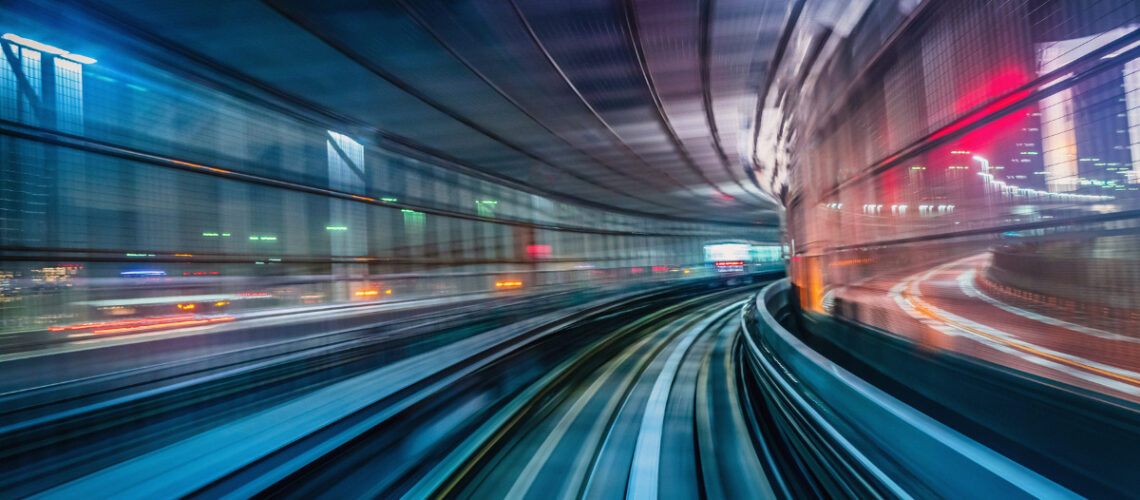In the modern transportation industry, two cutting-edge technologies have captured the imagination of engineers, policymakers, and the public alike: Hyperloop and High-Speed Rail. Both promise to revolutionize travel by drastically reducing travel times, increasing efficiency, and minimizing environmental impact. In this comparative analysis, we delve into the key features, benefits, feasibility, and potential impacts of these innovative transportation systems.
Hyperloop Transportation: Redefining Speed and Efficiency
The Hyperloop concept, popularized by Elon Musk’s SpaceX in 2013, envisions a network of low-pressure tubes through which pods carrying passengers or cargo can travel at remarkable speeds. Propelled by a combination of magnetic levitation and low-pressure environment, Hyperloop pods could potentially reach speeds of up to 700 miles per hour (1126 kilometers per hour), drastically reducing travel times between distant cities.
Benefits of Hyperloop:
Unparalleled Speed: Hyperloop’s potential speed exceeds that of any existing mode of transportation, allowing passengers to traverse vast distances in mere minutes.
Energy Efficiency: The low-pressure tube environment reduces air resistance, requiring significantly less energy to achieve and maintain high speeds.
Minimal Land Use: Hyperloop infrastructure requires narrower corridors compared to traditional transportation methods, making it suitable for densely populated urban areas.
Reduced Carbon Footprint: The energy-efficient design, coupled with the potential for renewable energy sources, could make Hyperloop one of the most eco-friendly transportation options.
High-Speed Rail: A Proven Track Record
High-Speed Rail (HSR) systems have been operational for decades in countries such as Japan, France, and China, offering a reliable alternative to air and road travel. These trains, capable of speeds exceeding 186 miles per hour (300 kilometers per hour), have demonstrated their feasibility and efficiency in connecting major cities and regions.
Benefits of High-Speed Rail:
Operational Experience: High-Speed Rail systems have a proven track record of safety and reliability, with decades of successful operation in various countries.
Infrastructure Synergy: HSR can often share tracks with existing rail networks, minimizing the need for new, dedicated corridors and reducing costs.
Stimulated Economies: HSR hubs have been shown to boost local economies by increasing tourism, trade, and connectivity.
Environmental Advantages: While not as fast as the Hyperloop, HSR still offers reduced carbon emissions compared to air travel and traditional road transportation.
Feasibility Challenges and Technological Complexities
While the Hyperloop’s vision is captivating, numerous challenges stand in the way of its realization. Creating a low-pressure environment within a vacuum tube on such a large scale presents substantial engineering challenges. Maintaining consistent speeds and addressing potential safety concerns, such as sudden tube breaches, are significant hurdles to overcome.
High-speed rail systems, while proven feasible, demand substantial investment in infrastructure. Constructing dedicated tracks and stations requires financial commitment and land acquisition. Moreover, integrating high-speed rail into existing urban landscapes can pose logistical challenges.
Potential Impact on Travel and Society
High-speed rails are already renowned for their rapid transit between major cities, reducing travel times and congestion on traditional roadways and air routes. Hyperloop transportation, on the other hand, promises even greater velocities through vacuum-sealed tubes, minimizing air resistance and enabling near-supersonic speeds. By combining these technologies, a comprehensive transportation network could emerge, seamlessly connecting distant regions and drastically shortening travel times.
Hyperloop technology has the potential to revolutionize transportation in profound ways. With the ability to reach speeds exceeding 700 miles per hour within low-pressure tubes, hyperloop pods could whisk passengers and cargo at unprecedented velocities, effectively shrinking the world and turning what used to be hours-long journeys into mere minutes. This innovation could not only ease congestion in heavily trafficked regions but also make daily commutes between neighboring cities feasible.
Moreover, hyperloops are designed with sustainability in mind, as they require significantly less energy compared to traditional modes of transportation. As this technology continues to advance and real-world implementations become more feasible, hyperloops could redefine the concept of distance, making fast and efficient travel an integral part of our future lives.
Bridging the Gap Between Vision and Reality
In the race to redefine transportation, both Hyperloop transportation and High-Speed Rail offer promising solutions to the challenges of speed, efficiency, and sustainability. While Hyperloop’s potential for groundbreaking speed captures the imagination, High-Speed Rail systems have already demonstrated their viability and benefits on a global scale. The path to implementation for both technologies is rife with challenges, from technical complexities to funding and regulatory hurdles.
As these innovations progress from concept to reality, a combination of factors including technological advancements, regulatory support, and public demand will play a crucial role in shaping the future of travel. Whether it’s the breathtaking velocity of the Hyperloop or the proven efficiency of High-Speed Rail, one thing is certain: the landscape of transportation is on the cusp of transformation, promising a new era of connectivity and mobility.
The journey towards a faster, more efficient transportation future is a complex one, involving a delicate balance between technological innovation, feasibility assessment, and societal integration. As these two visionary modes of transportation continue to evolve, the world watches with anticipation to see which will lead the way into the future of travel.

